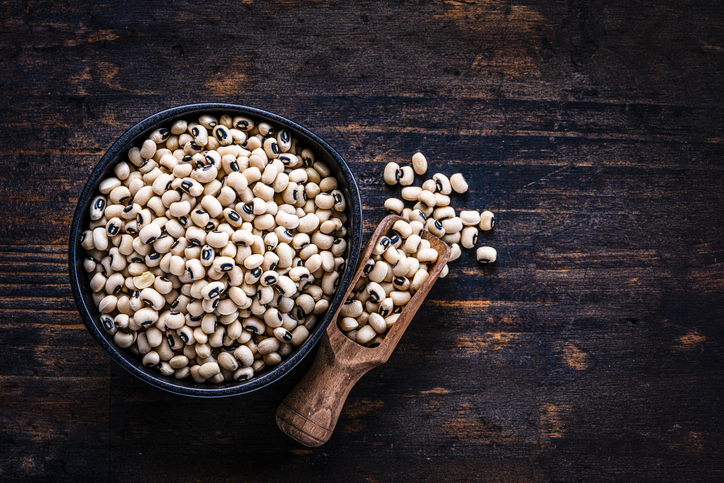
Source: fcafotodigital / Getty
Ahh…I can smell it now. The buttery aroma of black-eyed peas simmering away in Mom’s special crockpot as she gears up to stir in a generous helping of rice. Now, if your family is anything like mine, you’re left sitting eagerly until about 7 pm when the entire meal is done, to sink your teeth into the traditional staple, but one’s things for sure. Boy, do we love some black-eyed peas! It’s a tasty dish you’ll find in most Black households during the holiday season. Heck, all year round, if you’re lucky. But why do black moms always feed us black-eyed peas to start the New Year?
“It’s simple and it’s just a Southern tradition,” my mother told me adding that both her grandmother and mother would cook them religiously to ring in the New Year. “My mother used to make them with tomatoes.”
Black-eyed peas are typically made with cowpeas, a tasty little legume that’s origins trace back to West Africa and a few regions of Asia. My grandmother on my father’s side, Dot, a native of Savannah, Georgia who’s been whipping up the world’s best pot of black-eyed peas for nearly 96 years strong, says while she doesn’t quite know where the tradition started, her family used to “eat them for good luck.”
Black-eyed peas and rice have symbolized a lot of different things for Black Americans throughout history. A few sources believe that the swelling of the delicious peas as they boil to perfection in the pot is meant to symbolize abundance and prosperity. The matriarchs in my family often serve a hefty portion of delicious collard greens to go along with the dish. The dark rich color of the greens could signal wealth and financial success for the New Year, USA Today notes. Do you make them with tomatoes like my mom? According to Southern Living, the tasty added addition can symbolize health and wellness for the start of the year ahead.
Super cool, right? Now, nothing tops off a salivating portion of black-eyed peas like some good old turkey neck meat or bacon fat for flavor, according to my mother. But could the meat mean something too? Who knows! But the cowpeas’ history doesn’t have such a happy story.
The historic pea made its way over to the states during the Middle Passage where West African slaves were then forced to cultivate rice and beans on the same plantations that would enslave them for centuries. However, before they made their way to the Americas, cowpeas were used for all sorts of things as a food historian, Michael M. Twitty explores in his essay, THE COWPEA: A RECIPE FOR RESILIENCE.
“Before we were exiled, they were fritters and puddings. They were wedding foods symbolic of goddesses of fertility,” Twitty notes. “They were charitable food shared with the poor. They were a symbol of the unclosing eyes of the Creator and Ancestors. Our peas were tiny little texts, and we didn’t even know it.” West African slaves cultivated the dish to feed their children while keeping Southerners fed when food was scarce. “Living proof that African civilization was part and parcel of Southern existence,” Twitty mentioned during an interview with NPR in 2017. “They couldn’t do it without us.”
So, maybe black-eyed peas have a special meaning for everything, whether they tell a story of resilience, our unwavering courage to survive under centuries of oppression, or maybe it’s simply a reminder of family and strength. Remember to digest all of this when you gobble up a steaming plate of Black-eyed peas and rice this holiday season.
ALSO SEE:
The Ultimate Gift Guide For The Intellectual Black Woman
Why Do Black Moms Make Us Eat Black-Eyed Peas On New Year’s Day? was originally published on newsone.com















